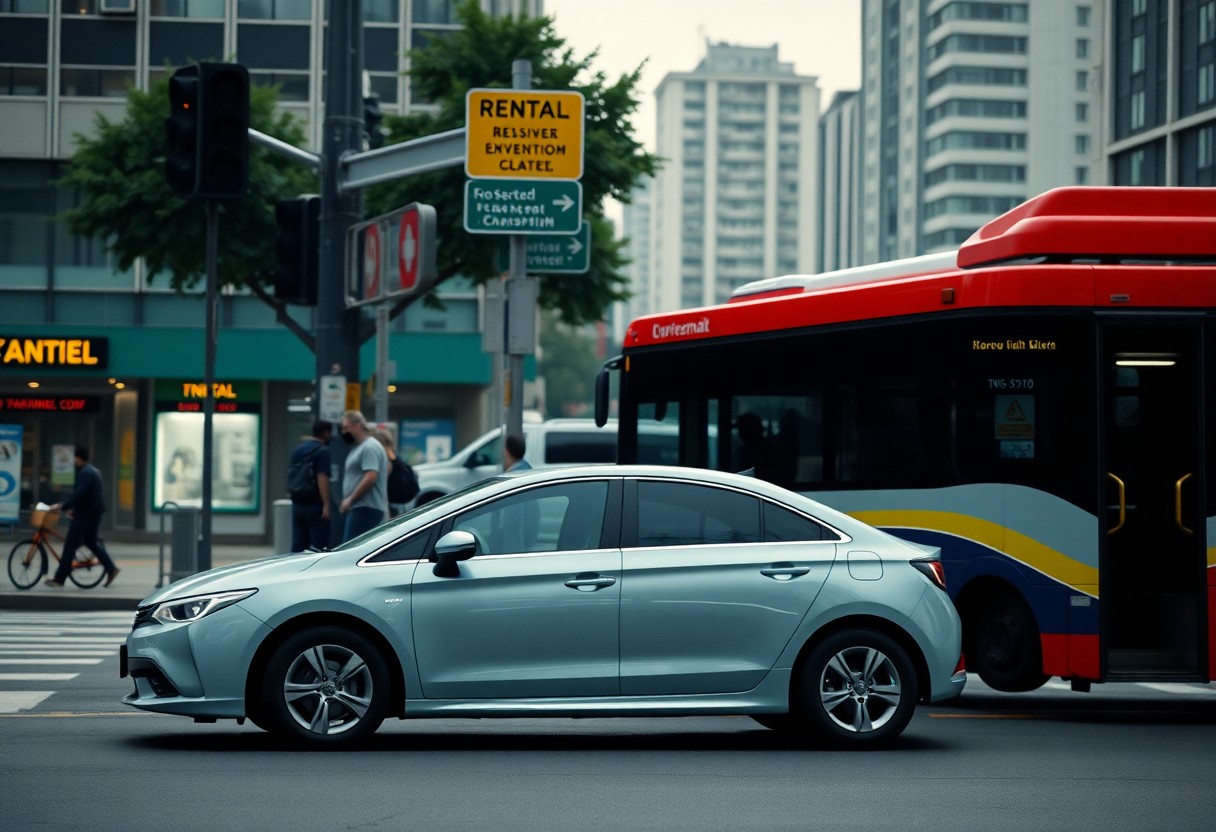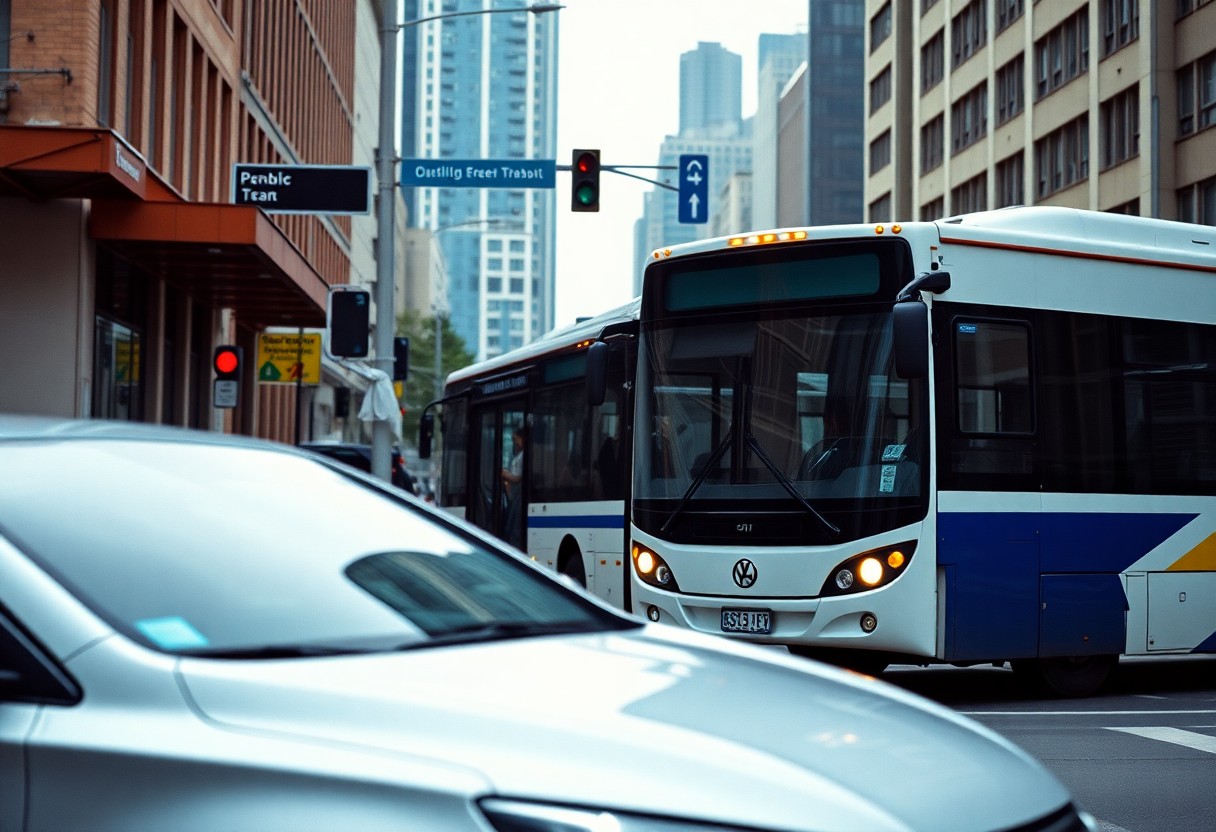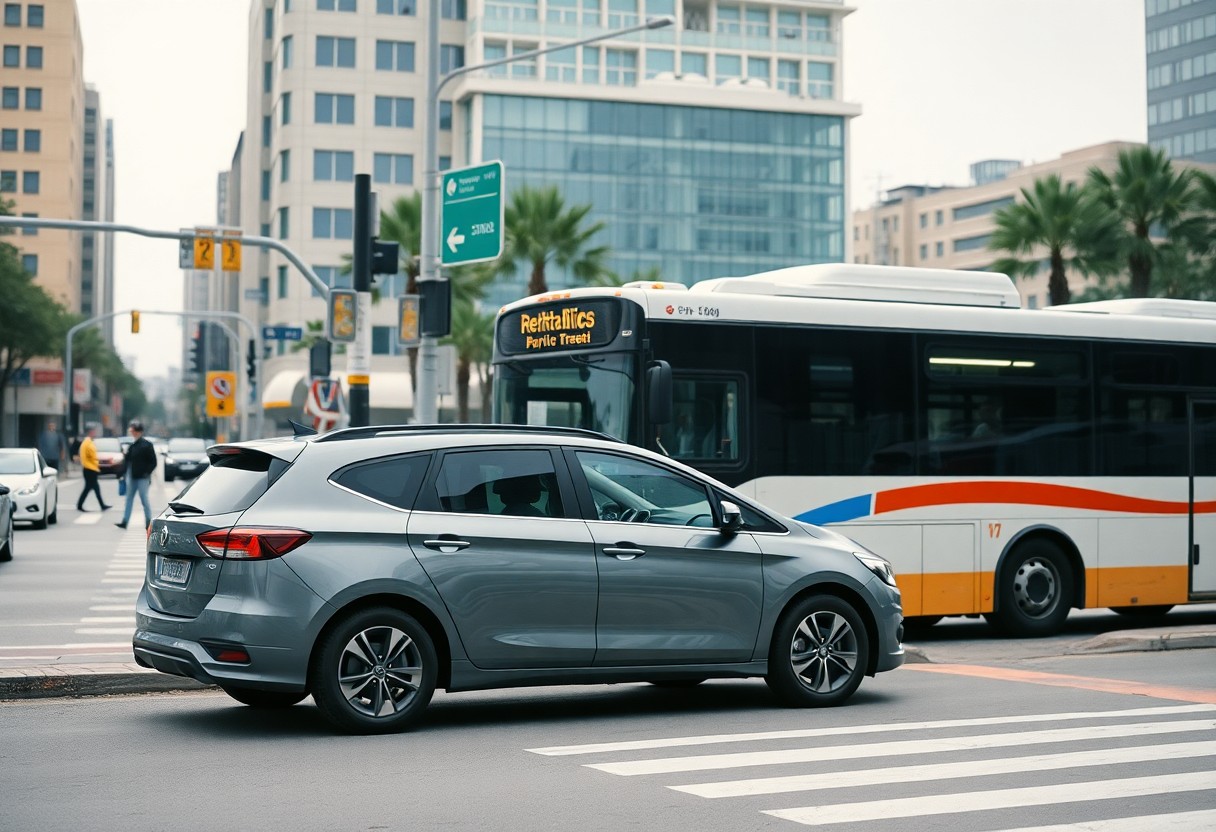As travel expenses continue to rise and personal time becomes more valuable, it is essential to carefully choose the best transportation method for your trip. This decision significantly affects your financial budget and overall travel experience. When planning your next adventure, you will find yourself weighing the freedom of a rental car against the cost-effectiveness of public transportation. Your choice will depend on various factors, including your travel destination, itinerary, and the number of companions. This detailed guide aims to help you explore crucial aspects such as hidden rental fees and public transport accessibility, ensuring you make a well-informed choice that caters to your specific travel needs.
Unlock Unmatched Travel Freedom by Choosing a Rental Car
Embracing the independence that comes with a rental vehicle opens up a world of travel possibilities. By selecting a rental car, you gain the power to tailor your itinerary and explore locations that extend beyond the usual tourist hotspots. Research indicates that 73% of travelers favor rental cars for their flexibility in adapting plans on the fly, making this option especially appealing for those who value freedom and spontaneity on their journeys. This freedom allows you to create unique experiences that align perfectly with your interests and preferences, enhancing the overall enjoyment of your trip.
Evaluating the Pros and Cons of Using Rental Cars
Once you secure your rental vehicle, you will experience a mix of newfound freedoms along with some limitations. While you gain the ability to venture into remote areas and adjust your schedule at will, it is vital to consider potential parking fees that can range from $25 to $45 daily in busy urban environments, as well as the navigation challenges you might encounter. Your rental car serves as a personal getaway, yet you will also need to manage fuel costs and deal with traffic conditions independently, which could affect your travel experience if not planned properly.
Discovering Hidden Fees and Unexpected Cost Benefits
Although the convenience of a rental car carries a price tag, it can also lead to unexpected savings. While the initial rental rates may seem high, it is crucial to recognize that traveling with a group can often be more cost-effective than purchasing individual tickets for public transportation. Recent findings reveal that families of four or more frequently save between 15% to 20% on transportation costs by opting for a rental vehicle instead of relying on public transit options. This cost efficiency becomes even more apparent as you factor in the advantages of shared experiences and flexibility during your travels.
Delving deeper into the financial implications reveals more aspects to consider. Insurance costs can add an additional to per day to your rental expenses, but many credit card companies offer rental car protection options that can alleviate these costs. Moreover, modern rental fleets boast impressive fuel efficiency (averaging around 30 to 35 MPG), which helps to reduce overall expenses. The convenience of door-to-door travel also saves you precious vacation time, allowing you to maximize your enjoyment while minimizing time lost on transportation logistics.

Navigating and Mastering the Public Transportation System
If your travel plans lean towards public transportation, the first step is to gain a thorough understanding of the available transit systems. Most major cities now feature user-friendly transit apps that simplify route planning, provide real-time updates on arrivals, and facilitate ticket purchases. Familiarizing yourself with the local transit network is essential, including various bus routes, subway lines, and transfer stations. Research indicates that 55% of urban travelers can save up to 30 minutes per trip by utilizing these transit applications, highlighting the importance of technological aids in enhancing your travel efficiency.
Exploring the Urban Public Transit Landscape Effectively
Each city’s public transportation system exhibits distinct patterns and operating hours. Be prepared to navigate peak travel times, typically between 7-9 AM and 4-6 PM, when transit options are most crowded. Consequently, your navigation strategy should include alternative routes, as delays are not uncommon during these busy periods. Incorporating a buffer time of 15 to 20 minutes for critical appointments will enhance your ability to arrive punctually, ensuring that you can enjoy your planned activities without unnecessary stress.
Engaging with the Social Dynamics of Public Transit
Beyond practical aspects, using public transportation offers a unique opportunity to engage socially. You will interact with both locals and fellow travelers, allowing you to immerse yourself in the city’s true essence. While this experience can sometimes lead to uncomfortable situations, it also provides rich cultural insights. Research suggests that regular public transit users develop improved social adaptability as they navigate various social scenarios, enhancing their overall travel experience. Each ride presents an opportunity to observe and learn about the local culture, enriching your journey in ways that go beyond mere sightseeing.
Moreover, navigating diverse social situations on public transport can be both exciting and challenging. From the bustling energy of rush hour to the quieter ambiance late at night, each moment offers a different atmosphere. Safety is particularly important during off-peak hours, so staying vigilant and choosing well-lit, populated areas for waiting is crucial. Most transit systems are now equipped with 24/7 security monitoring and emergency communication systems to ensure your safety while traveling, adding an extra layer of comfort during your commute.
Analyzing the Financial Aspects of Your Transportation Decision
When weighing your travel options, effective budgeting becomes a significant factor in choosing between rental cars and public transport. Your transportation costs can fluctuate significantly based on your destination, trip duration, and the size of your travel group. While rental cars offer greater flexibility, they also carry hidden costs such as insurance, fuel, and parking fees. On the flip side, public transit may appear more affordable at first glance, yet frequent daily rides can accumulate costs rapidly, potentially negating any initial savings.
Dissecting the True Costs of Driving
A thorough financial assessment of car rentals uncovers expenses that extend beyond just the daily rental rate. It is important to factor in $30 to $50 daily for insurance, average fuel costs of $40 to $60 per tank, and potential parking fees that can rise to $50 per day in major cities. Consequently, your total daily travel expenses might range from $100 to $200, making renting more financially viable when traveling as a group, as the costs can be spread among several people.
Evaluating the Cost Structure of Transit Tickets
At first glance, public transportation often appears to be the more budget-friendly choice. In cities like New York, where the average metro card costs $34 for unlimited weekly rides, travelers can realize significant savings compared to rental car expenses. Additionally, you avoid additional charges such as parking and fuel, making public transit especially advantageous for solo travelers who prefer sticking to established routes in urban centers. This financial perspective can greatly influence your decision-making process when choosing your transportation method.
Cost assessments reveal that weekly public transport passes in many large cities typically range from to , offering unlimited rides and substantial savings for frequent travelers. However, for families or groups of four or more, the total cost of multiple transit passes may end up exceeding the cost of a rental car, particularly when planning extensive daily excursions or trips to areas where public transport is limited. This consideration is essential for ensuring that you choose the most economical transportation option for your travel needs.

Maximizing Your Time Management for Efficient Travel
As you weigh the pros and cons of rental cars versus public transport, it is crucial to prioritize your time management. A rental car allows for direct, point-to-point travel, potentially saving you up to 40% of your travel time compared to public transportation. Your time is invaluable; while public transport may seem less expensive, it is essential to account for the amount of time spent waiting, transferring, and walking to and from stations. This perspective will help you make a more strategic decision based on your specific travel needs.
Enjoying the Freedom of Flexible Scheduling with Rental Cars
When discussing time flexibility, a rental car provides you with complete control over your departure and arrival times. You are free from the constraints of fixed transit schedules, allowing for spontaneous detours or last-minute changes to your itinerary. This level of freedom is particularly beneficial when plans shift unexpectedly or when you discover hidden gems that you want to explore during your travels. The ability to make decisions on the fly enhances the overall travel experience, making it more enjoyable and memorable.
Overcoming the Challenges of Public Transport Schedules
One of the primary challenges associated with public transportation is the necessity to adhere to set schedules. Studies reveal that 23% of urban buses do not operate on time during peak hours, which can lead to frustrations and delays. Your journey may require multiple transfers, and a delay in one service can create a domino effect, disrupting your entire day’s plans. To navigate public transport more effectively, it’s wise to build in extra buffer time.
Transport experts recommend adding 15 to 20 minutes to your estimated travel time for each connection. During rush hours or special events, doubling these buffer periods can significantly impact your overall schedule, ensuring you have enough time for activities and appointments without added stress.
Understanding the Environmental Impact of Your Transportation Choices
When evaluating your transportation options, recognizing the environmental implications of your decisions is vital. A single-occupancy rental car emits approximately 404 grams of CO2 per mile, while public transportation can cut emissions by up to 45% per passenger. The choice between renting a car and utilizing public transport leaves a lasting environmental footprint that merits careful consideration, especially in today’s climate-conscious society.
Grasping Your Carbon Footprint and Its Effects
Each mile traveled has direct consequences on climate change and environmental degradation. A fully-loaded bus can replace the need for 50 cars on the road, significantly reducing carbon emissions. A journey in a rental car can produce 4 to 5 times more CO2 compared to an equivalent trip via bus or train, although choosing electric or hybrid rental options can help mitigate this impact. Acknowledging these environmental factors is essential in making informed and responsible travel choices.
Exploring Sustainable Transit Alternatives at Your Destination
Upon arriving at your destination, you’ll find a variety of eco-friendly transportation options available. Electric car rentals can significantly reduce your carbon footprint by up to 50% compared to traditional gasoline vehicles. Additionally, many cities are now equipped with hybrid buses and electric trams, making public transport an increasingly sustainable option. This growing array of choices enables travelers to reduce their environmental impact while still enjoying the convenience of mobility.
Ultimately, your environmental footprint can vary significantly based on your transportation decisions. Consider adopting a mixed-method approach – rent an electric or hybrid vehicle for longer trips while utilizing public transport for navigating congested urban areas. Numerous rental agencies now feature green vehicle options, allowing you to maintain mobility while minimizing your ecological impact throughout your journey.

Enhancing Your Travel Comfort and Experience
Unlike public transportation, rental cars provide complete control over your comfort preferences. You can easily adjust the climate settings, seat positioning, and audio options to suit your personal tastes, creating a customized travel environment. This level of personalization becomes especially important during extreme weather conditions or lengthy journeys, where overall comfort can significantly influence your enjoyment of the trip and your overall satisfaction with your travel experience.
The Advantage of Personal Space in Rental Vehicles
One of the notable benefits of renting a car is the guaranteed personal space it provides. You won’t have to navigate crowded buses or trains, where personal space often shrinks to less than 4 square feet during peak travel times. Your rental car serves as a private oasis, enabling you to maintain complete control over who shares your travel space and ensuring a more pleasant journey overall.
The Varied Comfort Levels of Public Transportation
Comfort levels on public transport can greatly fluctuate due to circumstances beyond your control. During rush hours, you may find yourself packed in with 150 to 200 passengers in a single subway car, which can significantly diminish your comfort. The experience often entails standing for extended periods, especially during the average 38-minute commute in major urban areas, making it a less appealing option for many travelers.
In a typical rush-hour scenario on public transport, noise levels can peak at around 80 to 90 decibels, a sound level comparable to heavy city traffic. These conditions, coupled with unpredictable delays and service interruptions, can make your journey less enjoyable and more taxing, particularly when traveling with luggage or in a group. Being aware of these factors can help you prepare better for your travel arrangements.
Choosing the Ideal Transportation Option to Suit Your Needs
Ultimately, the decision between renting a car and using public transport should be based on your specific travel needs and preferences. If you value flexibility and comfort, particularly when traveling with family or friends, a rental car often provides the best value, even considering the higher initial costs. Conversely, public transportation may be a better fit for solo travelers on a budget who plan to stick to well-established routes in urban settings. It’s essential to evaluate factors such as your destination, group size, planned activities, and budget. By carefully weighing these elements against your personal priorities, you can determine the transportation option that aligns best with your travel objectives.
The Article: Renting a Car vs. Public Transport: Which is Best for Your Trip? appeared first on https://rentacar24.org/
The Article Renting a Car vs. Public Transport: Choose the Best Option for You Was Found On https://limitsofstrategy.com




Comments are closed